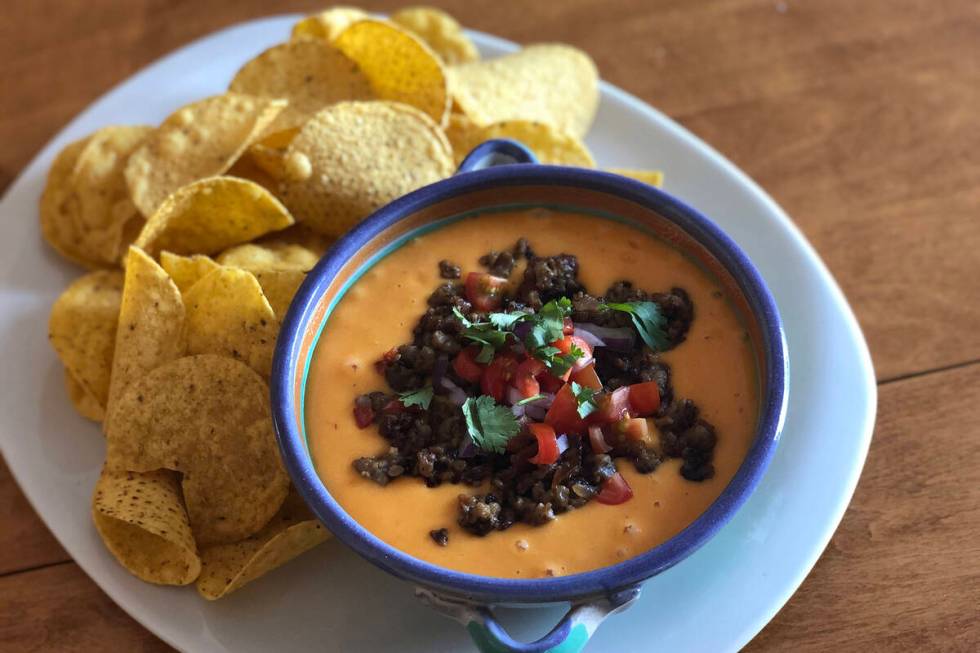10 tips for cooking with plant-based meat

Thanks to improved taste and texture, it’s easier than ever to work alternative meat sources into meals.
A decade ago, this would have been a very different story.
Meat alternatives such as tofu and tempeh were centuries old; frozen “veggie burgers” and the earliest plant-based meats had been on the scene for more than 20 years. Beyond Meat and Impossible Foods, now the industry’s biggest players, were in their infancies.
But the biggest strides in plant-based meats have been made in the past 10 years, and there’s no sign of a slowdown. Bloomberg estimates that plant-based proteins could make up nearly 8 percent of the global protein market by 2030. And in an article for The New York Times, award-winning chef and food writer J. Kenji López-Alt wrote that “modern vegan meat is among the most important technological leaps I’ve seen in my career.”
Now grocery freezers are filled with plant-based options, from premade sausages and chicken tenders to bulk packages of meat that look and cook similarly to ground beef. It’s easier than ever to add meat to your meatless meal, but not without recalibrating some kitchen habits.
We pored over cookbooks, articles and websites for the best information and advice for cooking with plant-based meats. Here are 10 tips to get you started:
Mind over matter: Experts recommend thinking of plant-based meat not as “fake meat” but as a substitute for it. In addition to the long list of plant-based meat substitutes, don’t forget other foods that can pinch-hit, such as tofu, tempeh, jackfruit and seitan. Think of meat as an accessory to the meal, not the main attraction.
A new normal: The makeup of uncooked plant-based meat makes it soft and sticky, so keep your fingers wet when working with it. If your recipe is hands-on, like meatballs, be sure the meat is chilled; keep rechilling so the meat holds the desired shape. Speaking of chilling, if you have leftover meat, refreezing it won’t change the taste and texture like it does animal meat. Keep it in airtight containers and it will last in the freezer for up to six months.
Easy on the salt: Salt is used in the production of plant-based meats, so if you’re following a standard recipe, reduce the amount of salt by one-fourth of teaspoon. (Cookbooks and recipes developed for plant-based meats already take salt content into account.) If you’re watching sodium intake, read labels — some brands have more sodium than others.
Flavor, flavor, flavor: Adding seasonings and marinades deepens the flavor and uses of plant-based meats. You can buy flavored meats, but creating your own seasonings allows you to control the ingredients. It’s also more practical and economical to buy unseasoned meat in bulk instead of several seasoned varieties.
You can’t read about plant-based meat without mentions of umami, the fifth taste. The Japanese word for “delicious” is often described as meaty or savory. Adding umami-rich foods — mushrooms, miso, soy sauce, olives, tomatoes, nutritional yeast — will give your plant-based dishes an extra flavor boost.
Get saucy: An easy entry into using plant-based meats is by choosing recipes with flavorful sauces — spaghetti, chili, enchiladas, teriyaki — or where meat plays a supporting role, such as dips. Plant-based meats release less liquid than their animal counterparts, so expect to use more liquids during cooking.
Get smoky, too: Plant-based meats lend themselves to smoky flavors, although their quick cooking time doesn’t allow them to pick up the flavor they would get languishing on a grill or in a smoker. Adding spices and seasonings such as smoked paprika, smoked salt and liquid smoke can fill the smoky gap. Once you’re ready to grill, make sure the grates are well-oiled; the fat makeup in plant-based meats makes them more susceptible to sticking.
Fatten it up: Plant-based meats don’t release fats the way animal meats do, so keep heart-healthy oils on hand to help it along. This not only prevents sticking, but also gives the meat a caramelized edge, distributes flavors and helps set the shape.
Don’t fear the sear: Plant-based meat is similar to regular meat in that it benefits from a good sear to caramelize the surfaces. Cast iron cookware works well for that grill-like taste (it retains and disperses heat the best); be sure it’s hot and well-seasoned to minimize sticking. For other uses, a nonstick pan is your friend.
Don’t overcook the meat: Plant-based or not, that’s easier said than done. Visual cues help gauge doneness in traditional meats, but the color of plant-based versions varies by brand. Instead, check for doneness more often, and use a meat thermometer to ensure it’s cooked according to the package instructions. America’s Test Kitchen also offered a helpful tip: Reverse the cooking order. Start with longer-cooking vegetables and aromatics, then add the meat.
Make your own: They say homemade is always best, and one could argue the same holds true for plant-based meat. Cookbooks give blueprints for creating everything from bacon and bologna to turkey rolls and taco meat. This isn’t a grab-and-go venture; do your research, scout ingredient sources and grab your sense of adventure before digging in.